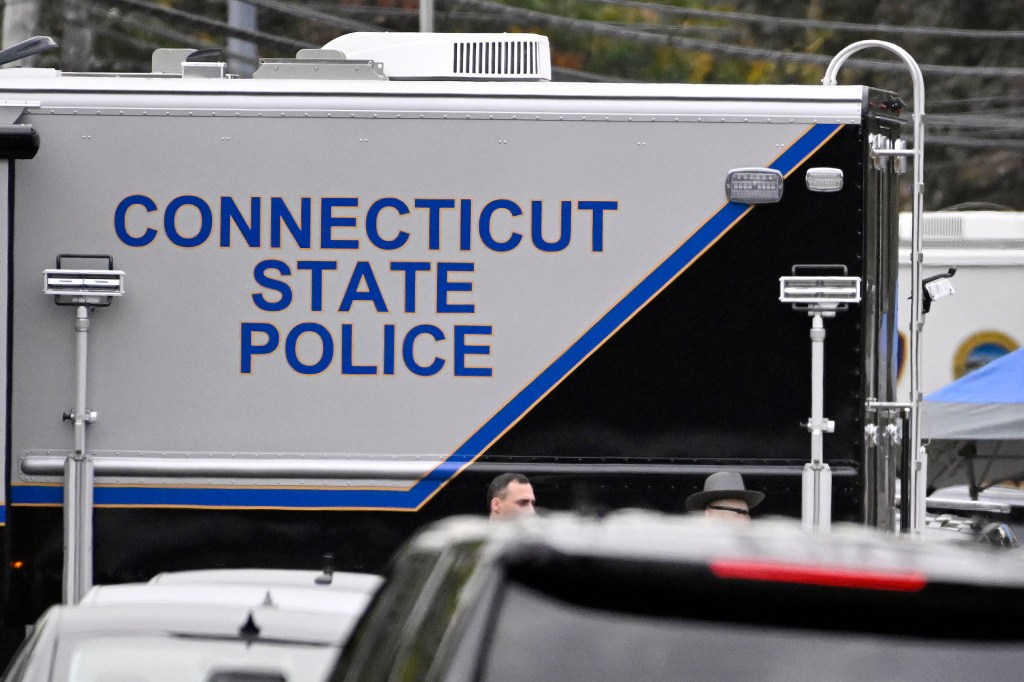Entering the wrong race info about drivers in Conn. traffic stops was a mistake, not intentional, probe finds
Errors distorted info on white drivers pulled over, prevalence of racial profiling, and led to 2 top officials stepping down […] The post Entering the wrong race info about drivers in Conn. traffic stops was a mistake, not intentional, probe finds appeared first on TheGrio.

Errors distorted info on white drivers pulled over, prevalence of racial profiling, and led to 2 top officials stepping down
HARTFORD, Conn. (AP) — Inaccurate racial profiling data on traffic stops made by the Connecticut State Police was largely the result of data-entry mistakes and other mishaps, not an intentional effort by troopers to submit bogus information, according to a report by independent investigators released Thursday.
While investigators referred seven officers with discrepancies in their data to state police internal affairs for further review, another 74 were found “not likely” to have committed misconduct, the report said. They also said there was no evidence any trooper engaged in misconduct with the specific intent of skewing the state’s police racial profiling data.

The outside review was ordered by Gov. Ned Lamont after an audit last year identified dozens of troopers who may have submitted false or inaccurate information on thousands of traffic stops believed to have never happened to the state’s system for preventing racial profiling. That data made it appear troopers pulled over more white motorists than they actually did, auditors said.
The audit by data analysts at the University of Connecticut led to the replacement of the state’s public safety commissioner and state police commander. The audit sowed doubt about the accuracy of periodic reports on the race and ethnicity of drivers pulled over by police statewide, which have shown that police disproportionately pull over Black and Hispanic motorists.
The outside investigators, led by former federal prosecutor Deirdre Daly, said they found “significant failures” by state police in reporting accurate data because of inadvertent errors, but said the scope of potential misconduct was far smaller than the audit suggested. Many of the problems were due to a lack of training of troopers and failures by leadership, the report said.
Daly’s team referred six troopers and a constable to state police internal affairs investigators because it appeared the number of traffic stops they reported was higher than the ones they actually made. While no proof of misconduct was found, the reason for the overreporting could not be determined, the report said.
The report disclosed that state police leadership also will refer between five and eight additional troopers to internal affairs because of problems with their data.

© Matt Grahn / USA TODAY NETWORK)
The state’s new public safety commissioner, Ronnell Higgins, said all the troopers referred to internal affairs have been removed from traffic enforcement duties. If misconduct is substantiated, they could be fired and lose their police certifications.
“The fact that even one trooper, one trooper, has been referred to internal affairs investigation for potential falsification of traffic stop data is troubling to me, and its troubling to all the troopers who are out there doing their work each and every day. I won’t tolerate it,” Higgins said at a news conference with Lamont at the state Capitol in Hartford.
Speaking about the officers referred to internal affairs, Lamont said, “I think there’s a sense that if there were some overreporting, a lot of it was done just trying to enhance the look of productivity, that they were doing more than otherwise.”
In the audit released last June, UConn analysts said they found a higher number of traffic citations by state police entered into the state database that tracks the race and ethnicity of drivers than the number of citations reported to the state court system, which handles all traffic citations.
The analysts reported they had a “high degree of confidence” that troopers submitted false or inaccurate information on citations to the database for at least 25,966 traffic stops and possibly more than 58,000 stops that may have never happened from 2014 to 2021.
The audit said 130 troopers were identified as having a significant disparity between traffic stop information submitted to the database compared with the court system. Since the audit, state police have cleared nearly 90 of the 130 troopers after reviewing their data, the new report said. That review is ongoing.
The UConn analysts noted, however, that they did not investigate whether any of the questionable data was intentionally falsified or the result of carelessness or human error.
The audit was spurred by a Hearst Connecticut Media report that said four state troopers in an eastern Connecticut barracks intentionally created hundreds of bogus traffic stop tickets to boost their productivity numbers. After internal affairs investigations, one trooper was suspended for 10 days, another was suspended for two days and the other two retired before the probe was completed.
The state police union has been critical of the UConn audit since it was released, saying it didn’t go far enough to determine why there were data errors.
“The union leadership feels vindicated” by the new report, said Andrew Matthews, the union’s executive director and a former trooper. He said the UConn audit “harmed the reputation of the agency unjustifiably and negatively impacted the trust the public has in law enforcement.”
The ticket data also is being investigated by the U.S. departments of Justice and Transportation.
Ken Barone, one of the UConn analysts, said the new report largely confirms the findings of last year’s audit.
“We were very clear,” Barone said in a phone interview Thursday. “Our report said that there was a high likelihood that records were false or inaccurate, and we have not seen any information that has altered our conclusion. What we have seen is information that provides explanations for why some of the data may have been inaccurate.”
Lamont and Higgins said a number of steps have already been taken to ensure the data is entered accurately, including placing computers in all police cruisers, training for troopers and supervisors, and auditing of the data.
Never miss a beat: Get our daily stories straight to your inbox with theGrio’s newsletter.
The post Entering the wrong race info about drivers in Conn. traffic stops was a mistake, not intentional, probe finds appeared first on TheGrio.












